
Qatar MotoGP: Márquez on another level, Viñales out of luck
Marc Márquez was on another level at Losail, while Viñales magicked amazing speed out of nowhere in the 2025 MotoGP Qatar GP, Honda made another step and Martin put himself back in hospital
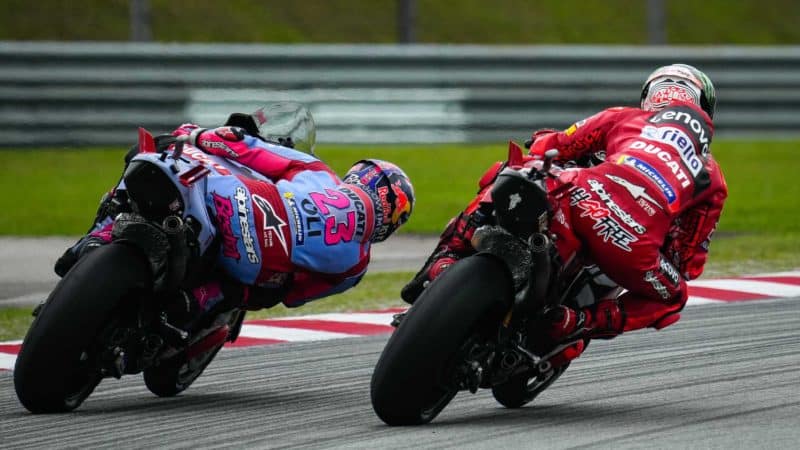
Bastianini left nothing in reserve as he battled fellow Ducati rider Bagnaia in 2022
Dorna Sports
Given that Ducati was supplying a third of the MotoGP grid in 2022, perhaps it’s little surprise that factory rider Pecco Bagnaia emerged as the champion. The result was far from certain for much of the season, however, as Fabio Quartararo took a 21 point lead over Aleix Espargaró into the summer break, with Bagnaia lagging 66 points behind following a series of crashes.
Also challenging, with three victories at that point, was Enea Bastianini, making a name for himself on the Gresini Racing Ducati. His performances, which gave little regard to Bagnaia in the Ducati hierarchy, made his 2023 promotion to the factory team inevitable.
But Bagania prevailed after a much stronger second half to the season and Yamaha’s flagging challenge. A dismal Honda and more missed races meant that Marc Márquez was also absent from the front for much of the season.
He’ll be back in 2023, however, which is more than can be said for Suzuki, which has axed its MotoGP effort — the team showing what the manufacturer will be missing by winning the final race of the year.
As ever, Mat Oxley brought his insider view from the paddock, despite Ducati taking umbrage and blacklisting him, while also delivering exclusive stories, including how teams were able to cheat the tyre pressure rules and the new front slick that could make a huge impact on racing.
He’s selected five of his favourite columns from the year, which we have republished below.
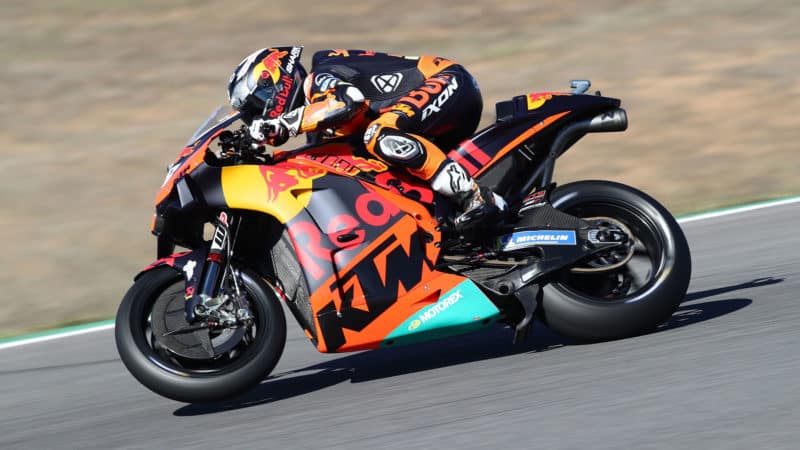
Lots of lean angle, standing on the footpegs, front wheel in the air – the beautiful ballet of MotoGP riding
Red Bull
June 14
Miguel Oliveira is KTM’s most successful MotoGP rider, with four wins aboard the RC16. He’s also technical and articulate, so he’s able to offer some fascinating insights into MotoGP riding technique.
The 27-year-old Portuguese rider tells us about the science behind the leg dangle, why traction control makes you slower, why MotoGP riders weave down straights, how downforce aerodynamics change the way you ride, how to get the best out of shapeshifters (ride-height devices), dealing with front-tyre temperature/pressure problems and much more.
Mat Oxley: This is your fourth year in MotoGP and downforce aero has been getting bigger and bigger, so how has that changed the way you exit corners, regarding wheelies and so on?
Miguel Oliveira: Before it used to be super-important to keep a certain amount of lean angle even once you were out of the corner, so that you arrived at the wheelie limit of the bike as late as possible.
[The wheelie limit is the point where the bike starts to wheelie, which activates the anti-wheelie program, which reduces power.]
Which is why we see you weaving down the straight, left and right, left and right, to keep the bike leaning?
Yes, we call this weaving ‘the wave’. The wave is super-important because you have to keep the front wheel down. Once you have zero lean angle the bike gets the information that it can release full power, then you have a wheelie and then the anti-wheelie cuts in, reducing power.
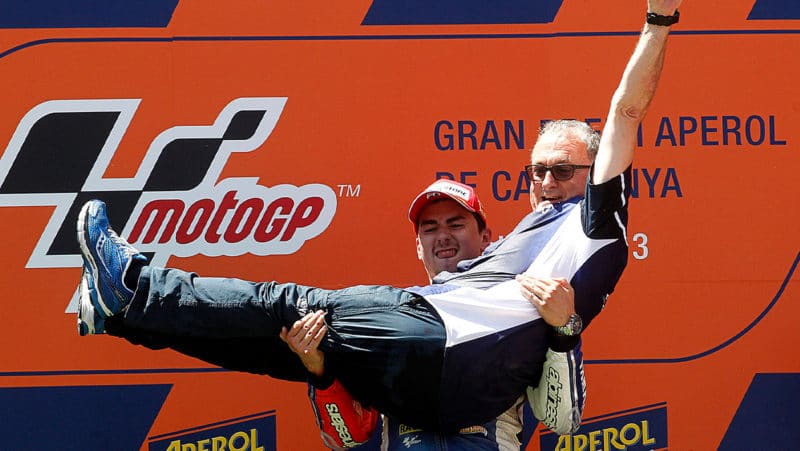
Ramon Forcada celebrates Jorge Lorenzo’s victory at Barcelona in 2013. The pair won three MotoGP titles together: 2010, 2012 and 2015
Getty Images
July 12
Ramon Forcada’s greatest achievement is his triple championship success with Jorge Lorenzo but he’s done plenty more: he won his first MotoGP races with Carlos Checa in the days of 500cc two-strokes, he was Casey Stoner’s first MotoGP crew chief and he’s also won races with Alex Barros, Maverick Viñales and Franky Morbidelli.
Although Forcada has enjoyed his greatest successes with big four-strokes he still regards his years working on 500s as his favourite time in MotoGP, because engineers had a deeper involvement with the motorcycles.
“I only worked with Honda 500s, the NSR500, but there was always something to do with the engine, whereas now we have nothing to do with the engine,” says Forcada, who worked for Sito Pons’ team at the time. “We played with the pistons, using sandpaper to clean them up. We also cleaned up the ports and polished the cylinder heads, never to change the timing or compression, but just to make everything nice. And if you worked like this you always got a little more performance. I always liked this job on the dyno – finding small improvements.”
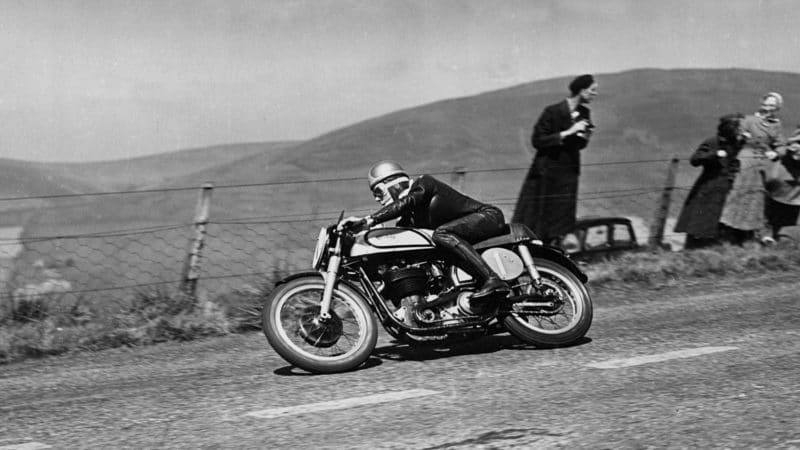
Geoff Duke and a Norton single on their way to Isle of Man TT victory in 1951 – seven years later the Vanwall F1 car, with four over-bored Norton top ends, won the F1 constructors title
Getty Images
August 2
Norton was the dominant name in motorcycle racing in the first half of the first century of the internal-combustion engine: dozens of Isle of Man TT victories, plus world championship successes in the 350cc and MotoGP categories. (Yes, the class was called 500cc back then.)
All these successes were achieved with the Birmingham factory’s single-cylinder engines, particularly the company’s first overhead-cam unit designed by Walter Moore in the 1920s. Moore was so keen to understand what was required from engines at the TT – the world’s most important motorcycle race at that time – that he became a sidecar passenger, so he could study Norton’s current engine from the closest quarters.
Moore won the sidecar 1924 TT and used what he learned during that race to help him design his overhead-cam engine – tagged the CS1 (Camshaft Senior Model 1) – which won its debut race, the 1927 Senior TT, with Alec Bennett on board. Bennett was an Irishman whose had family emigrated to Canada in the early 1900s. He returned to Europe to fight in the First World War, first as a despatch rider and later as a fighter pilot. He later settled in Britain and became a factory Norton rider.
Anyway, Norton’s successes in grand prix racing – seven riders’ and constructors’ world championships between 1950 and 1952 – were so impressive that it didn’t take a genius to realise that four Norton 500cc top ends might be gathered together to create a two-litre Formula 1 engine.
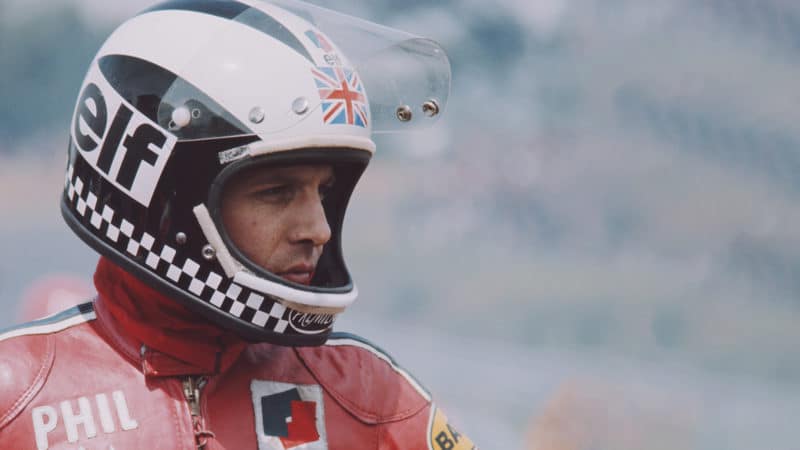
Read in 1974, when he won his second 500cc world title with MV Agusta, the last 500 crown won by a four-stroke
Don Morley/Getty Images
October 7
Phil Read used to vomit. Often.
When the so-called Prince of Speed (because Giacomo Agostini was its king) was at the height of his powers in the late 1960s and early 1970s most Grands Prix were staged around street circuits, where he knew full well that one mistake might be his last, never mind the fact that he was fighting for FIM world championships, just as Fabio Quartararo, Pecco Bagnaia, Aleix Espargaró and others fight for world championships today.
Read and his rivals lived a knife-edge existence between risk and reward like few before or since. He admitted that the combination of the two often had him doubling up over the toilet before a grand prix, the hideous rush of adrenaline causing him to vomit before he steadied and dressed himself for the fight: pudding-basin helmet and a leather onesie. Not much use when meeting a brick wall at a hundred and fifty hundred miles an hour.
Despite all this, Read made history. He was the first rider to win the junior, intermediate and senior world championships – 125s, 250s and 500s in those days – an achievement that even now has only been matched by Valentino Rossi and Marc Márquez. That’s how special he was, in an age when every GP season stole several lives and no one seemed to care.
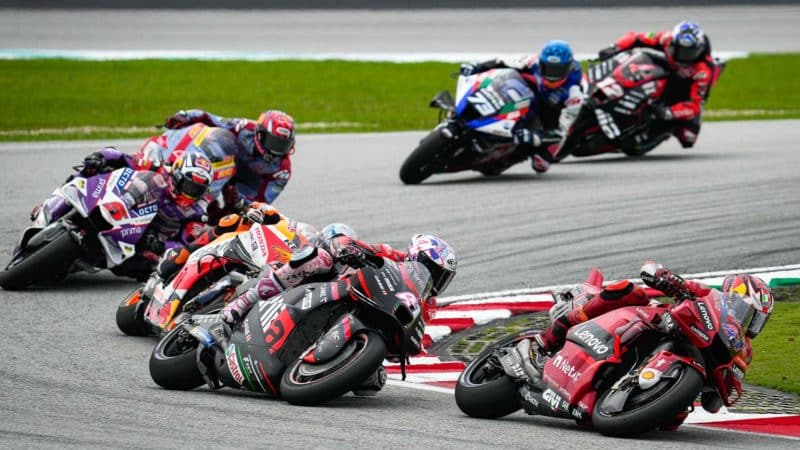
Jack Miller, Aleix Espargaró, Marc Márquez (out injured for six races), Johann Zarco and others have had very up and down 2022s
Dorna Sports
October 25
Top MotoGP riders are more inconsistent now than they’ve been ever before.
This understandably confuses a lot of fans and can make MotoGP impossible to understand: how can the same rider and motorcycle finish second one weekend and tenth the next? Was the rider just not bothered the second time out, so he decided to have a lazy Sunday? Did his engineers decide to take the weekend off and drink beers in the hotel bar?
There has to be a reason, so is it because today’s MotoGP riders are lazy, unfocused and too busy spending their millions on fast cars and swimming pools?
The results of recent seasons suggest that might be the case.
In 2020 Joan Mir won the MotoGP title by scoring just 48% of the available points. Fabio Quartararo won last year’s crown with 62% of the points. Now Pecco Bagnaia is on the verge of winning this year’s championship, having scored 54% of the points from the first 19 races. This puts them all near the bottom of average points scores since the first world championship in 1949.

Marc Márquez was on another level at Losail, while Viñales magicked amazing speed out of nowhere in the 2025 MotoGP Qatar GP, Honda made another step and Martin put himself back in hospital

Bagnaia won his first race of 2025 at COTA but he’s still 5-1 down to his team-mate Marc Márquez, so how will their duel go this weekend in Qatar, which is supposed to better suit Bagnaia’s riding style?

Motorcycle racing is a nasty business, which is why many greatest racers indulge in questionable tactics. Following Marc Márquez’s COTA stunt, here are a few dodgy tales about former MotoGP kings Barry Sheene, Eddie Lawson and Phil Read
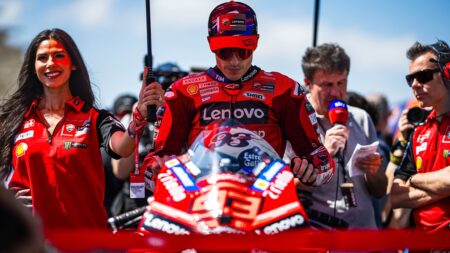
Marc Márquez seemed to have hoodwinked them all before Sunday’s COTA Grand Prix got underway, then he threw it all away and Pecco Bagnaia swept to his first win of 2025